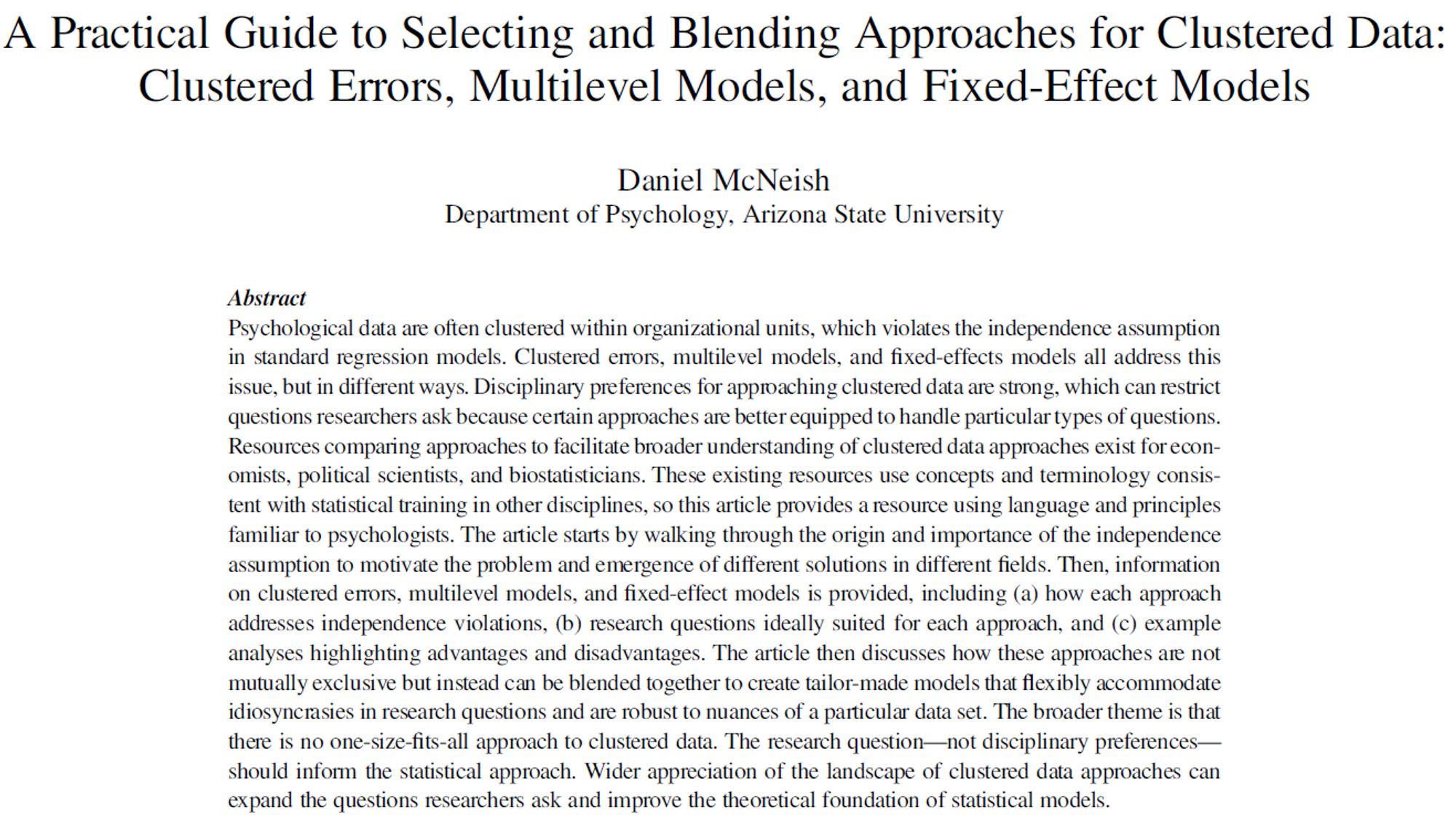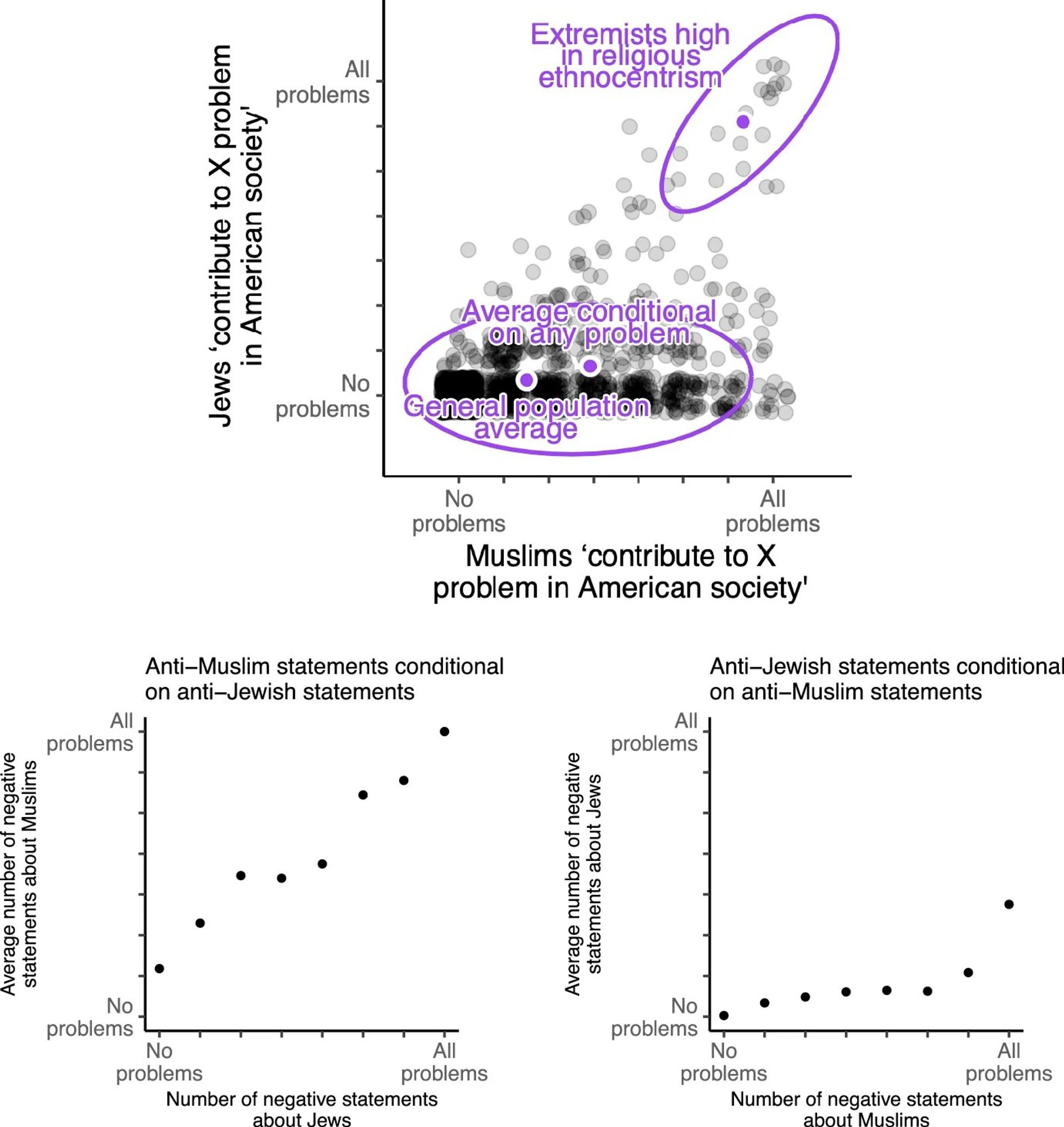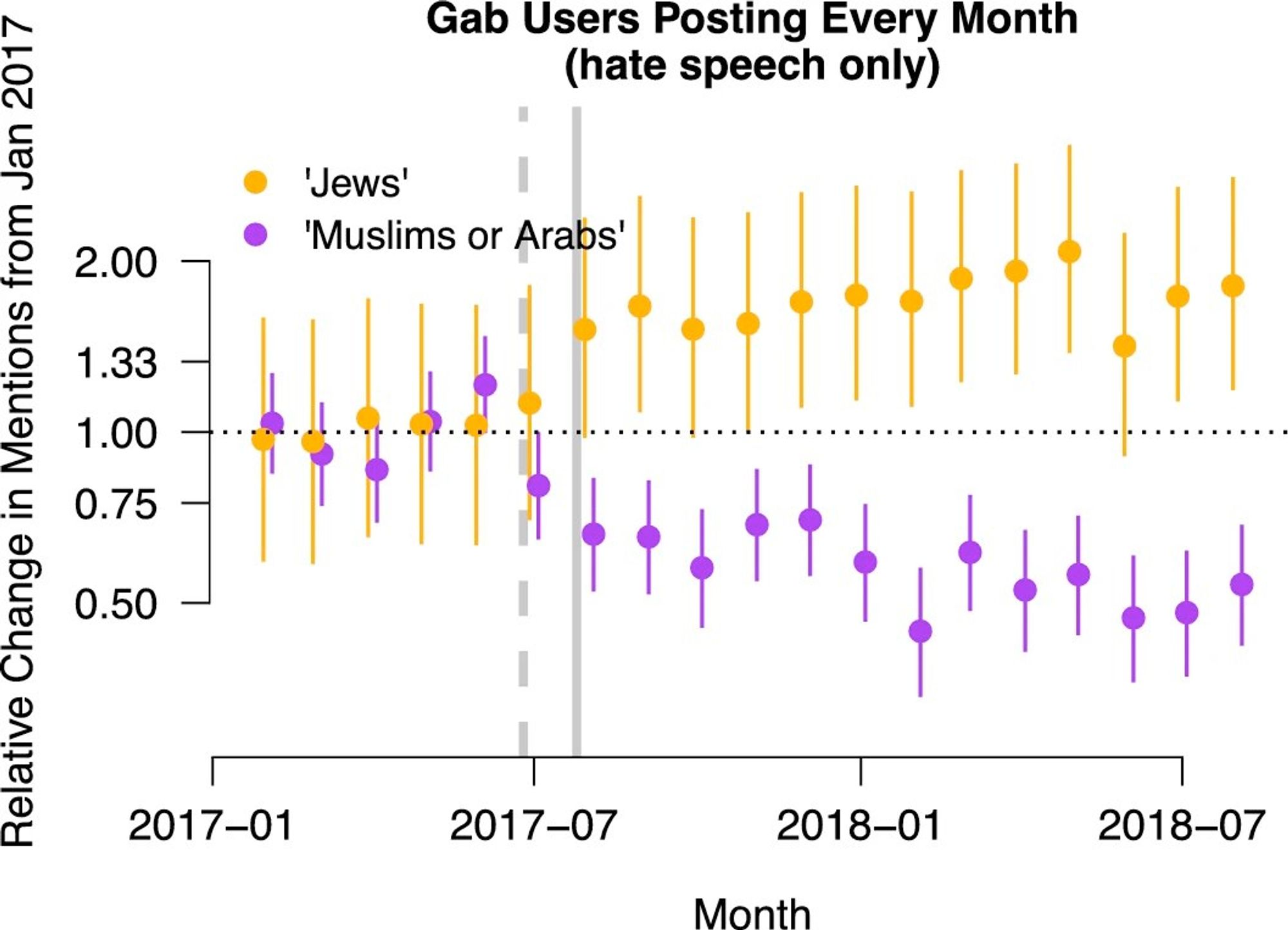A systematic review & meta-analysis of the relationship between economic inequality & prosocial behaviour "on avg...a small, negative relationship (r = −0.064, P = 0.004). Generally no evid. results depend on study characteristics, participants, measurement, & the publication discipline. sociology 📈

This meta-analysis of the relationship between economic inequality and prosocial behaviour finds that the relationship varies from being negative to positive, but, on average, higher economic inequali...
Most papers comparing clustered data methods use biostat/econ language, so I tried to write one using psyc/ed language that covers the origin of the independence assumption, how each method handles ind. violations, and types of questions best-suited for each method psycnet.apa.org/record/2024-...

📣 Come work with us!! Excited to announce that I will be recruiting a PhD student this cycle at NYU. Interested in the psychology of identity, group dynamics, politics, and language...? in exploring new methods? Check out our website: ashwinia.com & please share widely & with interested students
Excited to see this out! Our paper, led by Audrey Aday, shows that gender differences in systemitising and empathising, often used to justify gender inequalities, are not innate but due to gender differences in learning opportunities. #socialpsyc#psychskyjournals.sagepub.com/doi/full/10....
Anti-Muslim and anti-Jewish hate online stems from the same fringe, white supremacist communities who target both groups interchangeably, finds Hobbs, @nazita.bsky.socialdoi.org/10.1007/s111...




New article in Nature Human Behavior co-led by Aaron Nichols! In a Registered Report, we ran a field study to test whether images of organizational diversity impact the quality and quantity of applicants from majority and minority groups. www.nature.com/articles/s41...
Contrary to our expectations, in a new paper published in GPIR, we find that people across various cultures seem more likely to mentally represent a "typical person" as a woman than as a man. The article is available open access at journals.sagepub.com/doi/10.1177/...

New work in GPIR co-led by @kunstjonas.bsky.social, Marilena Juettemeier, & me! Prior work finds evidence that the (proto)typical person is a man e.g., people list men as examples of "humanity" and "person" concepts overlap more with "male" than "female" in large-scale text corpora
#socialpsyc#PsychSciSky#polisky#Sociology#PrejudiceResearch Machine language analysis of 12,000 reference letters (economics job market) finds.... .....women (vs men) described more in terms of hard work (grindstone), and less in terms of brilliance or ability
📣 Exciting but belated news: My first, and first-first author publication is out now in Social and Personality Psychology Compass: "Counterfactual thinking may attenuate polarization of COVID-19 prevention behavior" compass.onlinelibrary.wiley.com/doi/10.1111/...